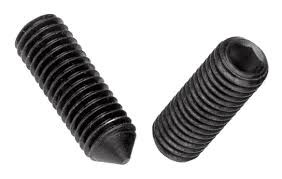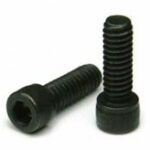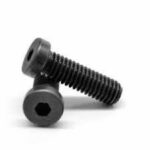Cone point set screws, also known as cone-point grub screws or cone-tip set screws, are a type of fastener designed for securing one object within or against another. These screws have a pointed, cone-shaped tip instead of a flat or rounded one. The cone point allows for a more precise and localized contact with the mating surface.
Here are some key features and uses of cone point set screws:
-
- Pointed Tip: The cone-shaped point of these screws facilitates a strong and focused grip on the surface it contacts. This can be useful for applications where precise alignment or minimal surface damage is important.
- Applications: Cone point set screws are often used in situations where a flush or recessed fastener is desirable. They are commonly employed in assemblies where a standard flat-tip screw might not provide enough holding power or where a more discreet fastening solution is required.
- Materials: Like other set screws, cone point set screws are available in various materials, including stainless steel, alloy steel, and brass, among others. The choice of material depends on factors such as the application environment and the required level of corrosion resistance.
- Threaded Design: These screws typically feature internal threads that allow them to be tightened into a pre-tapped hole or onto a shaft. The threads help secure the screw in place, preventing unintended loosening.
- Hex Socket Drive: Cone point set screws often come with a hex socket drive, requiring an Allen wrench or hex key for installation. This design allows for easy and secure tightening.
- Common Sizes: Cone point set screws are available in various sizes and lengths to accommodate different applications. The size and length of the screw needed depend on the specific requirements of the assembly.
When using cone point set screws, it’s essential to consider factors such as the material of the mating surfaces, the amount of torque applied during installation, and the overall design requirements of the assembly. Proper installation and tightening are crucial to ensuring the effectiveness of these fasteners in holding components together.





